2019 California Standards for Accessible Design Guide (effective January 1, 2020 with July 1, 2021 amendments)
11B-703 Signs
11B-703.1 General.
Signs shall comply with Section 11B-703. Where both visual and tactile characters are required, either one sign with both visual and tactile characters, or two separate signs, one with visual, and one with tactile characters, shall be provided.
11B-703.1.1 Plan review and inspection.
Signs as specified in Section 11B-703, or in other sections of this code, when included in the construction of new buildings or facilities, or when included, altered or replaced due to additions, alterations or renovations to existing buildings or facilities, and when a permit is required, shall comply with Sections 11B-703.1.1.1 and 11B-703.1.1.2.
11B-703.1.1.1 Plan review.
Plans, specifications or other information indicating compliance with these regulations shall be submitted to the enforcing agency for review and approval.
11B-703.1.1.2 Inspection.
Signs and identification devices shall be field inspected after installation and approved by the enforcing agency prior to the issuance of a final certificate of occupancy per Chapter 1, Division II, Section 111, or final approval where no certificate of occupancy is issued. The inspection shall include, but not be limited to, verification that Braille dots and cells are properly spaced and the size, proportion and type of raised characters are in compliance with these regulations.
11B-703.2 Raised characters.
Raised characters shall comply with Section 11B-703.2 and shall be duplicated in Braille complying with Section 11B-703.3. Raised characters shall be installed in accordance with Section 11B-703.4.

11B-703.2.1 Depth.
Raised characters shall be 1/32 inch (0.8 mm) minimum above their background.
11B-703.2.2 Case.
Characters shall be uppercase.
11B-703.2.3 Style.
Characters shall be sans serif. Characters shall not be italic, oblique, script, highly decorative, or of other unusual forms.
11B-703.2.4 Character proportions.
Characters shall be selected from fonts where the width of the uppercase letter “O” is 60 percent minimum and 110 percent maximum of the height of the uppercase letter “I”.
[2010 ADA Standards] 703.2.4 Character Proportions. Characters shall be selected from fonts where the width of the uppercase letter "O" is 55 percent minimum and 110 percent maximum of the height of the uppercase letter "I".
11B-703.2.5 Character height.
Character height measured vertically from the baseline of the character shall be 5/8 inch (15.9 mm) minimum and 2 inches (51 mm) maximum based on the height of the uppercase letter “I”.
Exception: Reserved.
[2010 ADA Standards] EXCEPTION: Where separate raised and visual characters with the same information are provided, raised character height shall be permitted to be ½ inch (13 mm) minimum.
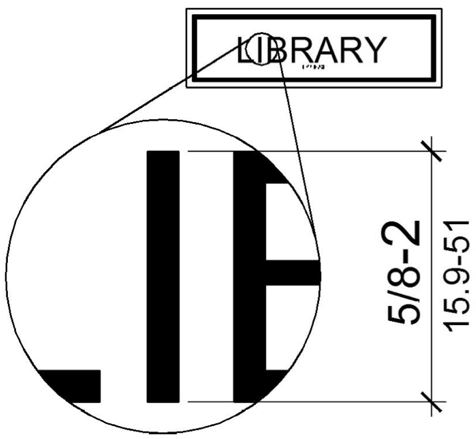
FIGURE 11B-703.2.5 HEIGHT OF RAISED CHARACTERS
11B-703.2.6 Stroke thickness.
Stroke thickness of the uppercase letter “I” shall be 15 percent maximum of the height of the character.
11B-703.2.7 Character spacing.
Character spacing shall be measured between the two closest points of adjacent raised characters within a message, excluding word spaces. Where characters have rectangular cross sections, spacing between individual raised characters shall be 1/8 inch (3.2 mm) minimum and 4 times the raised character stroke width maximum. Where characters have other cross sections, spacing between individual raised characters shall be 1/16 inch (1.6 mm) minimum and 4 times the raised character stroke width maximum at the base of the cross sections, and 1/8 inch (3.2 mm) minimum and 4 times the raised character stroke width maximum at the top of the cross sections. Characters shall be separated from raised borders and decorative elements 3/8 inch (9.5 mm) minimum.
11B-703.2.8 Line spacing.
Spacing between the baselines of separate lines of raised characters within a message shall be 135 percent minimum and 170 percent maximum of the raised character height.
11B-703.2.9 Format.
Text shall be in a horizontal format.
11B-703.3 Braille.
Braille shall be contracted (Grade 2) and shall comply with Sections 11B-703.3 and 11B-703.4.

11B-703.3.1 Dimensions and capitalization.
Braille dots shall have a domed or rounded shape and shall comply with Table 11B-703.3.1. The indication of an uppercase letter or letters shall only be used before the first word of sentences, proper nouns and names, individual letters of the alphabet, initials, and acronyms.
TABLE 11B-703.3.1 BRAILLE DIMENSIONS
|
MEASUREMENT RANGE |
MINIMUM IN INCHES |
||||||||||||||||||||||||||||||||||||||
|---|---|---|---|---|---|---|---|---|---|---|---|---|---|---|---|---|---|---|---|---|---|---|---|---|---|---|---|---|---|---|---|---|---|---|---|---|---|---|---|
|
Dot base diameter |
0.059 (1.5 mm) to 0.063 (1.6 mm) |
||||||||||||||||||||||||||||||||||||||
|
Distance between two dots in the same cell1 |
0.100 (2.5 mm) |
||||||||||||||||||||||||||||||||||||||
|
Distance between corresponding dots in adjacent cells1 |
0.300 (7.6 mm) |
||||||||||||||||||||||||||||||||||||||
|
Dot height |
0.025 (0.6 mm) to 0.037 (0.9 mm) |
||||||||||||||||||||||||||||||||||||||
|
Distance between corresponding dots from one cell directly below1 |
0.395 (10 mm) to 0.400 (10.2 mm) |
1. Measured center to center.
ETA Editor's Note
Table 11B-703.3.1 in CBC is the same as Table 703.3.1 in 2010 ADA Standards, except for distance between dots in the same cell or adjacent cells. 2010 ADA Standards allows a range, while CBC prescribes the maximum spacing allowed by 2010 ADA Standards, with no deviation allowed. When dealing with sign manufacturers or elevator companies whose scope of operations extends outside California, extra diligence is necessary to ensure that CBC braille specifications are followed.
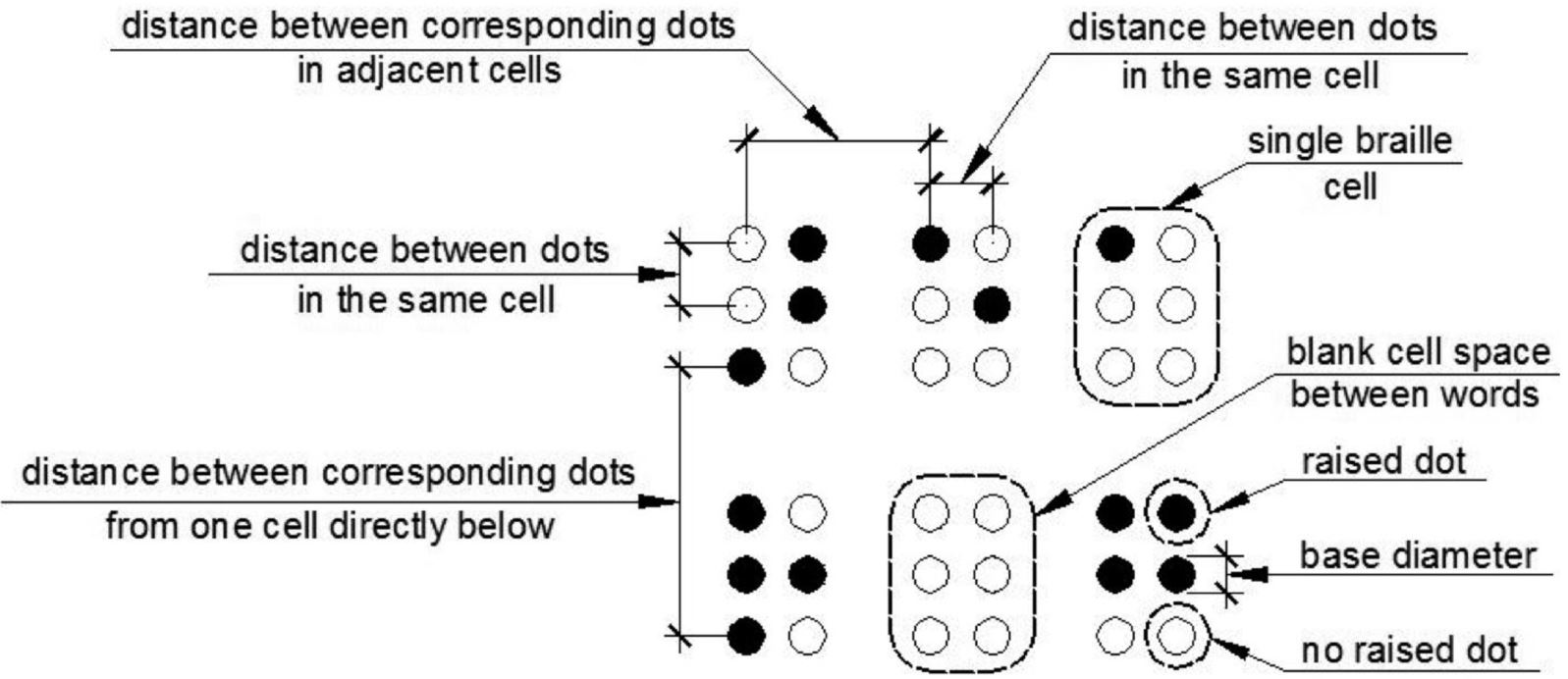
FIGURE 11B-703.3.1 BRAILLE MEASUREMENT ‡‡
11B-703.3.2 Position.
Braille shall be positioned below the corresponding text in a horizontal format, flush left or centered. If text is multi-lined, Braille shall be placed below the entire text. Braille shall be separated 3/8 inch (9.5 mm) minimum and ½ inch (12.7 mm) maximum from any other tactile characters and 3/8 inch (9.5 mm) minimum from raised borders and decorative elements.
[2010 ADA Standards] 703.3.2 Position. Braille shall be positioned below the corresponding text. If text is multi-lined, braille shall be placed below the entire text. Braille shall be separated 3/8 inch (9.5 mm) minimum from any other tactile characters and 3/8 inch (9.5 mm) minimum from raised borders and decorative elements.
Exception: Braille provided on elevator car controls shall be separated 3/16 inch (4.8 mm) minimum and shall be located directly below the corresponding raised characters or symbols.
[2010 ADA Standards] EXCEPTION: Braille provided on elevator car controls shall be separated 3/16 inch (4.8 mm) minimum and shall be located either directly below or adjacent to the corresponding raised characters or symbols.
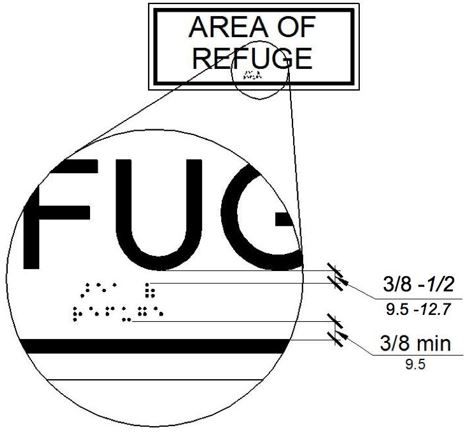
FIGURE 11B-703.3.2 POSITION OF BRAILLE ‡‡
ETA Editor's Note
CBC Figure 11B-703.3.2 is not intended to suggest that braille must be multi-lined when the related text is multi-lined, only to illustrate the required position and spacing from other sign elements.
11B-703.4 Installation height and location.
Signs with tactile characters shall comply with Section 11B-703.4.
11B-703.4.1 Height above finish floor or ground.
Tactile characters on signs shall be located 48 inches (1219 mm) minimum above the finish floor or ground surface, measured from the baseline of the lowest Braille cells and 60 inches (1524 mm) maximum above the finish floor or ground surface, measured from the baseline of the highest line of raised characters.
[2010 ADA Standards] 703.4.1 Height Above Finish Floor or Ground. Tactile characters on signs shall be located 48 inches (1220 mm) minimum above the finish floor or ground surface, measured from the baseline of the lowest tactile character and 60 inches (1525 mm) maximum above the finish floor or ground surface, measured from the baseline of the highest tactile character.
Exception: Tactile characters for elevator car controls shall not be required to comply with Section 11B-703.4.1.
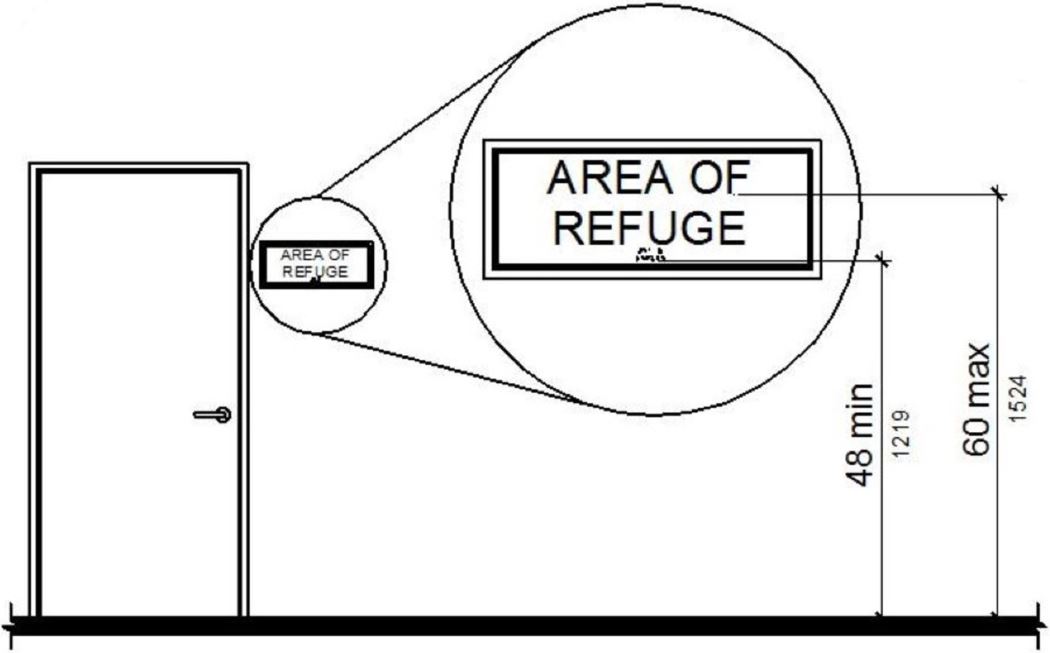
FIGURE 11B-703.4.1 HEIGHT OF TACTILE CHARACTERS ABOVE FINISH FLOOR OR GROUND ‡‡
11B-703.4.2 Location.
Where a tactile sign is provided at a door, the sign shall be located alongside the door at the latch side. Where a tactile sign is provided at double doors with one active leaf, the sign shall be located on the inactive leaf. Where a tactile sign is provided at double doors with two active leafs, the sign shall be located to the right of the right hand door. Where there is no wall space at the latch side of a single door or at the right side of double doors, signs shall be located on the nearest adjacent wall. Signs containing tactile characters shall be located so that a clear floor space of 18 inches (457 mm) minimum by 18 inches (457 mm) minimum, centered on the tactile characters, is provided beyond the arc of any door swing between the closed position and 45 degree open position. Where provided, signs identifying permanent rooms and spaces shall be located at the entrance to, and outside of the room or space. Where provided, signs identifying exits shall be located at the exit door when approached in the direction of egress travel.
[2010 ADA Standards] 703.4.2 Location. Where a tactile sign is provided at a door, the sign shall be located alongside the door at the latch side. Where a tactile sign is provided at double doors with one active leaf, the sign shall be located on the inactive leaf. Where a tactile sign is provided at double doors with two active leafs, the sign shall be located to the right of the right hand door. Where there is no wall space at the latch side of a single door or at the right side of double doors, signs shall be located on the nearest adjacent wall. Signs containing tactile Characters shall be located so that a clear floor space of 18 inches (455 mm) minimum by 18 inches (455 mm) minimum, centered on the tactile characters, is provided beyond the arc of any door swing between the closed position and 45 degree open position.
Exception: In alterations where sign installation locations identified in Section 11B-703.4.2 are obstructed or otherwise unavailable for sign installation, signs with tactile characters shall be permitted on the push side of doors with closers and without hold-open devices.
[2010 ADA Standards] EXCEPTION: Signs with tactile characters shall be permitted on the push side of doors with closers and without hold-open devices.
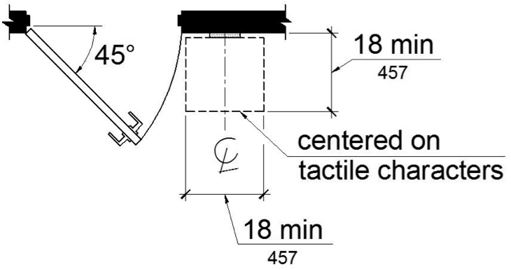
FIGURE 11B-703.4.2 LOCATION OF TACTILE SIGNS AT DOORS

11B-703.5 Visual characters.
Visual characters shall comply with Section 11B-703.5.
Exception: Where visual characters comply with Section 11B-703.2 and are accompanied by Braille complying with Section 11B-703.3, they shall not be required to comply with Sections 11B-703.5.2 through 11B-703.5.6, 11B-703.5.8 and 11B-703.5.9.
[2010 ADA Standards] EXCEPTION: Where visual characters comply with 703.2 and are accompanied by braille complying with 703.3, they shall not be required to comply with 703.5.2 through 703.5.9.
11B-703.5.1 Finish and contrast.
Characters and their background shall have a non-glare finish. Characters shall contrast with their background with either light characters on a dark background or dark characters on a light background.

11B-703.5.2 Case.
Characters shall be uppercase or lowercase or a combination of both.
11B-703.5.3 Style.
Characters shall be conventional in form. Characters shall not be italic, oblique, script, highly decorative, or of other unusual forms.
11B-703.5.4 Character proportions.
Characters shall be selected from fonts where the width of the uppercase letter “O” is 60 percent minimum and 110 percent maximum of the height of the uppercase letter “I”.
[2010 ADA Standards] 703.5.4 Character Proportions. Characters shall be selected from fonts where the width of the uppercase letter "O" is 55 percent minimum and 110 percent maximum of the height of the uppercase letter "I".
11B-703.5.5 Character height.
Minimum character height shall comply with Table 11B-703.5.5. Viewing distance shall be measured as the horizontal distance between the character and an obstruction preventing further approach towards the sign. Character height shall be based on the uppercase letter “I”.
Exception: Where provided, floor plans providing emergency procedures information in accordance with Title 19 shall not be required to comply with Section 11B-703.5.5.
TABLE 11B-703.5.5 VISUAL CHARACTER HEIGHT
| Height To Finish Floor Or Ground From Baseline Of Character | Horizontal Viewing Distance | Minimum Character Height |
| 40 inches (1016 mm) to less than or equal to 70 inches (1778 mm) | less than 72 inches (1829 mm) | 5/8 inch (15.9 mm) |
| 72 inches (1829 mm) and greater | 5/8 inch (15.9 mm), plus 1/8 inch (3.2 mm) per foot (305 mm) of viewing distance above 72 inches (1829 mm) | |
| Greater than 70 inches (1778 mm) to less than or equal to 120 inches (3048 mm) | less than 180 inches (4572 mm) | 2 inches (51 mm) |
| 180 inches (4572 mm) and greater | 2 inches (51 mm) , plus 1/8 inch (3.2 mm) per foot (305 mm) of viewing distance above 180 inches (4572 mm) | |
| Greater than 120 inches (3048 mm) | less than 21 feet (6401 mm) | 3 inches (76 mm) |
| 21 feet (6401 mm) and greater | 3 inches (76 mm) , plus 1/8 inch (3.2 mm) per foot (305 mm) of viewing distance above 21 feet (6401 mm) |
11B-703.5.6 Height from finish floor or ground.
Visual characters shall be 40 inches (1016 mm) minimum above the finish floor or ground.
Exceptions:
- Visual characters indicating elevator car controls shall not be required to comply with Section 11B-703.5.6.
- Floor-level exit signs complying with Chapter 10, Section 1013.7 shall not be required to comply with Section 11B-703.5.6.
- Where provided, floor plans providing emergency procedures information in accordance with Title 19 shall not be required to comply with Section 11B-703.5.6.
11B-703.5.7 Stroke thickness.
Stroke thickness of the uppercase letter “I” shall be 10 percent minimum and 20 percent maximum of the height of the character.
[2010 ADA Standards] 703.5.7 Stroke Thickness. Stroke thickness of the uppercase letter "I" shall be 10 percent minimum and 30 percent maximum of the height of the character.
11B-703.5.8 Character spacing.
Character spacing shall be measured between the two closest points of adjacent characters, excluding word spaces. Spacing between individual characters shall be 10 percent minimum and 35 percent maximum of character height.
11B-703.5.9 Line spacing.
Spacing between the baselines of separate lines of characters within a message shall be 135 percent minimum and 170 percent maximum of the character height.
11B-703.5.10 Format.
Text shall be in a horizontal format.
11B-703.6 Pictograms.
Pictograms shall comply with Section 11B-703.6.

11B-703.6.1 Pictogram field.
Pictograms shall have a field height of 6 inches (152 mm) minimum. Characters and Braille shall not be located in the pictogram field.

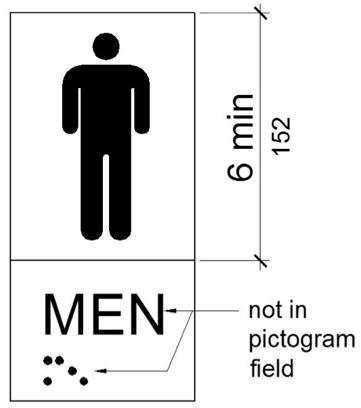
FIGURE 11B-703.6.1 PICTOGRAM FIELD
11B-703.6.2 Finish and contrast.
Pictograms and their field shall have a non-glare finish. Pictograms shall contrast with their field with either a light pictogram on a dark field or a dark pictogram on a light field.

11B-703.6.3 Text descriptors.
Pictograms shall have text descriptors located directly below the pictogram field. Text descriptors shall comply with Sections 11B-703.2, 11B-703.3 and 11B-703.4.
11B-703.7 Symbols of accessibility.
Symbols of accessibility shall comply with Section 11B-703.7.

11B-703.7.1 Finish and contrast.
Symbols of accessibility and their background shall have a non-glare finish. Symbols of accessibility shall contrast with their background with either a light symbol on a dark background or a dark symbol on a light background.

11B-703.7.2.1 International Symbol of Accessibility.
The International Symbol of Accessibility shall comply with Figure 11B-703.7.2.1. The symbol shall consist of a white figure on a blue background. The color blue shall approximate FS 15090 in Federal Standard 595C. A border may be provided inside or outside of the minimum required International Symbol of Accessibility dimension.
[2010 ADA Standards] 703.7.2.1 International Symbol of Accessibility. The International Symbol of Accessibility shall comply with Figure 703.7.2.1.
Exceptions:
- The appropriate enforcement agency may approve other colors provided the symbol contrast is light on dark or dark on light.
- On the accessibility function button on hall call consoles in a destination-oriented elevator system the International Symbol of Accessibility shall be a white symbol on a black background.
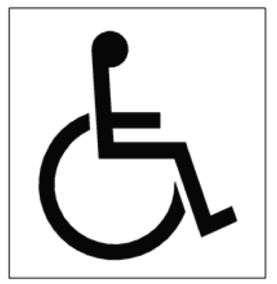
FIGURE 11B-703.7.2.1 INTERNATIONAL SYMBOL OF ACCESSIBILITY

11B-703.7.2.2 International Symbol of TTY.
The International Symbol of TTY shall comply with Figure 11B-703.7.2.2.

FIGURE 11B-703.7.2.2 INTERNATIONAL SYMBOL OF TTY
11B-703.7.2.3 Volume control telephones.
Telephones with a volume control shall be identified by a pictogram of a telephone handset with radiating sound waves on a square field such as shown in Figure 11B-703.7.2.3.
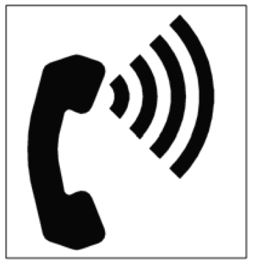
FIGURE 11B-703.7.2.3 VOLUME CONTROL TELEPHONE
11B-703.7.2.4 Assistive listening systems.
Assistive listening systems shall be identified by the International Symbol of Access for Hearing Loss complying with Figure 11B-703.7.2.4.
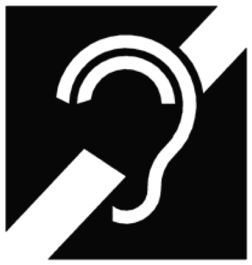
FIGURE 11B-703.7.2.4 INTERNATIONAL SYMBOL OF ACCESS FOR HEARING LOSS
11B-703.7.2.6 Toilet and bathing facilities geometric symbols.
Geometric symbols at entrances to toilet and bathing rooms shall be mounted at 58 inches (1473 mm) minimum and 60 inches (1524 mm) maximum above the finish floor or ground surface measured from the centerline of the symbol. Where a door is provided the symbol shall be mounted within 1 inch (25 mm) of the vertical centerline of the door.

When toilet and bathing facilities have doorway openings instead of doors, such as at airports or stadiums, the geometric identification symbol should be located at the proper height adjacent to the opening or incorporated into the required tactile identification sign. For example, the geometric symbol may be used as the sign background with raised characters and Braille per Sections 11B-703.2 and 11B-703.3. ◼
11B-703.7.2.6.1 Men’s toilet and bathing facilities.
An equilateral triangle, ¼ inch (6.4 mm) thick with edges 12 inches (305 mm) long and a vertex pointing upward, shall be located at entrances to men’s toilet and bathing facilities. The triangle symbol shall contrast with the door, either light on a dark background or dark on a light background.
Exception: Within secure perimeter of detention and correctional facilities, geometric symbols shall not be required to be ¼ inch (6.4 mm) thick.
11B-703.7.2.6.2 Women’s toilet and bathing facilities.
A circle, ¼ inch (6.4 mm) thick and 12 inches (305 mm) in diameter, shall be located at entrances to women’s toilet and bathing facilities. The circle symbol shall contrast with the door, either light on a dark background or dark on a light background.
Exception: Within secure perimeter of detention and correctional facilities, geometric symbols shall not be required to be ¼ inch (6.4 mm) thick.
11B-703.7.2.6.3 Unisex toilet and bathing facilities.
A circle, ¼ inch (6.4 mm) thick and 12 inches (305 mm) in diameter with a ¼ inch (6.4 mm) thick triangle with a vertex pointing upward, superimposed on and geometrically inscribed within the circle and within the 12-inch diameter, shall be provided at entrances to unisex toilet and bathing facilities. The vertices of the triangle shall be located ¼ inch (6.4 mm) maximum from the edge of the circle. The triangle symbol shall contrast with the circle symbol, either light on a dark background or dark on a light background. The circle symbol shall contrast with the door, either light on a dark background or dark on a light background.
Exception: Within secure perimeter of detention and correctional facilities, geometric symbols shall not be required to be ¼ inch (6.4 mm) thick.
11B-703.7.2.6.4 Edges and vertices on geometric symbols.
Edges shall be eased or rounded at 1/16 inch (1.59 mm) minimum, or chamfered at 1/8 inch (3.2 mm) maximum. Vertices shall be radiused between 1/8 inch (3.2 mm) minimum and ¼ inch (6.4 mm) maximum.

FIGURE 11B-703.7.2.6.4 EDGES AND VERTICES ON GEOMETRIC SYMBOLS
11B-703.7.2.7 Pedestrian traffic-control buttons.
Pole-supported pedestrian traffic-control buttons shall be identified with color coding consisting of a textured horizontal yellow band 2 inches (51 mm) in width encircling the pole, and a 1-inch-wide (25 mm) dark border band above and below this yellow band. Color coding shall be placed immediately above the control button. Control buttons shall be located no higher than 48 inches (1219 mm) above the ground surface adjacent to the pole.
11B-703.8.1 General.
High resolution variable message sign (VMS) characters shall comply with Sections 11B-703.5 and 11B-703.8.12 through 11B-703.8.14. Low resolution variable message sign (VMS) characters shall comply with 11B-703.8.
11B-703.8.2 Case.
Low resolution VMS characters shall be uppercase.
11B-703.8.3 Style.
Low resolution VMS characters shall be conventional in form, shall be san serif, and shall not be italic, oblique, script, highly decorative, or of other unusual forms.
11B-703.8.4 Character height.
The uppercase letter “I” shall be used to determine the allowable height of all low resolution VMS characters of a font. Viewing distance shall be measured as the horizontal distance between the character and an obstruction preventing further approach towards the sign. The uppercase letter “I” of the font shall have a minimum height complying with Table 11B-703.8.4.
Exception: In assembly seating where the maximum viewing distance is 100 feet (30.5 m) or greater, the height of the uppercase “I” of low resolution VMS fonts shall be permitted to be 1 inch (25 mm) for every 30 feet (9144 mm) of viewing distance, provided the character height is 8 inches (203 mm) minimum. Viewing distance shall be measured as the horizontal distance between the character and where someone is expected to view the sign.
TABLE 11B-703.8.4 LOW RESOLUTION VMS CHARACTER HEIGHT
| HEIGHT ABOVE FLOOR TO BASELINE OF CHARACTER | HORIZONTAL VIEWING DISTANCE | MINIMUM CHARACTER HEIGHT |
| 40 inches (1016 mm) to less than or equal to 70 inches (1778 mm) | Less than 10 feet (3048 mm) | 2 inches (51 mm) |
| 10 feet (3048 mm) and greater | 2 inches (51 mm), plus 1/5 inch (5.1 mm) per foot (305 mm) of viewing distance above 10 feet (3048 mm) | |
| Greater than 70 inches (1778 mm) to less than or equal to 120 inches (3048 mm) | Less than 15 feet (4572 mm) | 3 inches (76 mm) |
| 15 feet (4572 mm) and greater | 3 inches (76 mm), plus 1/5 inch (5.1 mm) per foot (305 mm) of viewing distance above 15 feet (4572 mm) | |
| Greater than 120 inches (3048 mm) | Less than 20 feet (6096 mm) | 4 inches (102 mm) |
| 20 feet (6096 mm) and greater | 4 inches (102 mm), plus 1/5 inch (5.1 mm) per foot (305 mm) of viewing distance above 20 feet (6096 mm) |
11B-703.8.5 Character width.
The uppercase letter “O” shall be used to determine the allowable width of all low resolution VMS characters of a font. Low resolution VMS characters shall comply with the pixel count for character width in Table 11B-703.8.5.
TABLE 11B-703.8.5 PIXEL COUNT FOR LOW RESOLUTION VMS
|
CHARACTER HEIGHT |
CHARACTER WIDTH RANGE | STROKE WIDTH RANGE |
CHARACTER SPACING RANGE |
|---|---|---|---|
| 7 | 5-6 | 1 | 2 |
| 8 | 6-7 | 1-2 | 2-3 |
| 9 | 6-8 | 1-2 | 2-3 |
| 10 | 7-9 | 2 | 2-4 |
| 11 | 8-10 | 2 | 2-4 |
| 12 | 8-11 | 2 | 3-4 |
| 13 | 9-12 | 2-3 | 3-5 |
| 14 | 10-13 | 2-3 | 3-5 |
| 15 | 11-14 | 2-3 | 3-5 |
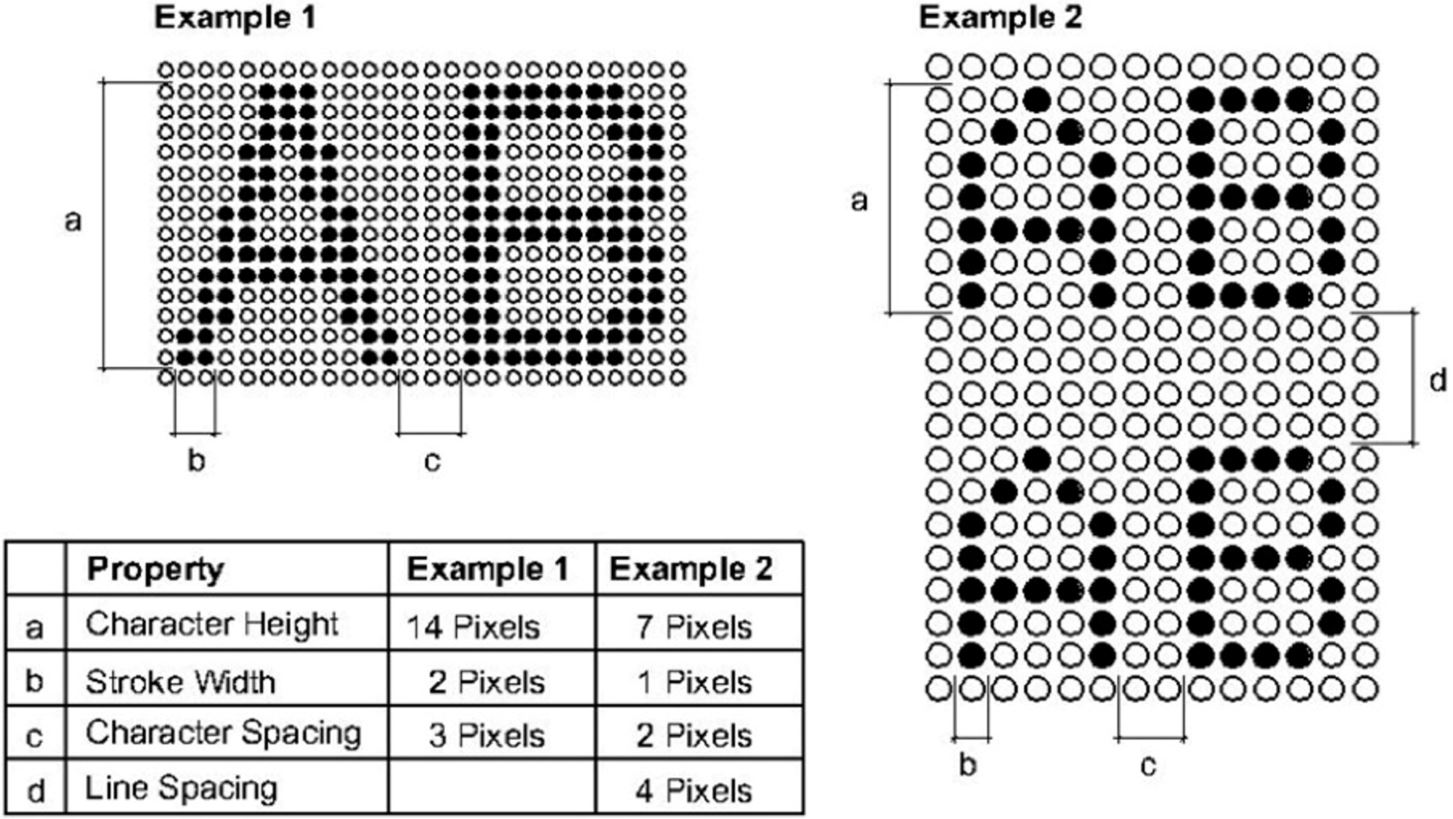
FIGURE 11B-703.8.5 LOW RESOLUTION VMS CHARACTERS
11B-703.8.6 Stroke width.
The uppercase letter “I” shall be used to determine the allowable stroke width of all low resolution VMS characters of a font. Low resolution VMS characters shall comply with the pixel count for stroke width in Table 11B-703.8.5.
11B-703.8.7 Character spacing.
Spacing shall be measured between the two closest points of adjacent low resolution VMS characters within a message, excluding word spaces. Low resolution VMS character spacing shall comply with the pixel count for character spacing in Table 11B-703.8.5.
11B-703.8.8 Line spacing.
Low resolution VMS characters shall comply with Section 11B-703.5.9.
11B-703.8.9 Height above floor.
Low resolution VMS characters shall be 40 inches (1016 mm) minimum above the floor of the viewing position, measured to the baseline of the character. Heights of low resolution variable message sign characters shall comply with Table 11B-703.8.4, based on the size of the characters on the sign.
11B-703.8.10 Finish.
The background of low resolution VMS characters shall have a non-glare finish.
11B-703.8.11 Contrast.
Low resolution VMS characters shall be light characters on a dark background.
11B-703.8.12 Protective covering.
Where a protective layer is placed over VMS characters through which the VMS characters must be viewed, the protective covering shall have a non-glare finish.
11B-703.8.13 Brightness.
The brightness of variable message signs in exterior locations shall automatically adjust in response to change in ambient light levels.
11B-703.8.14 Rate of change.
Where a VMS message can be displayed in its entirety on a single screen, it shall be displayed on a single screen and shall remain motionless on the screen for a minimum 3 seconds or one second minimum for every 7 characters of the message including spaces, whichever is longer.

User Comments/Questions
Add Comment/Question